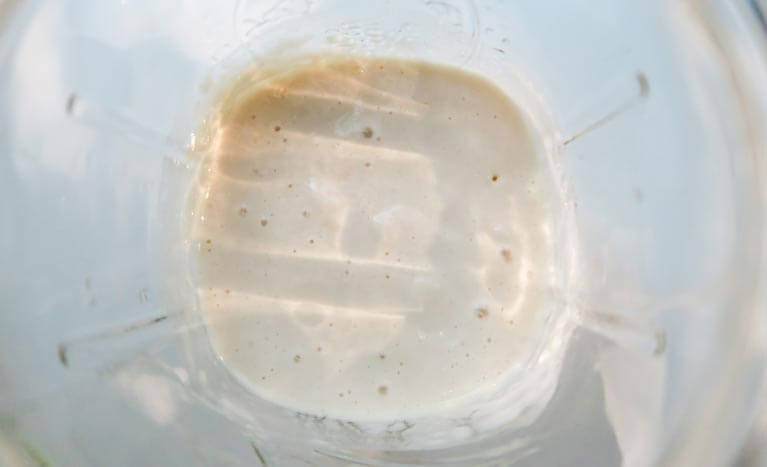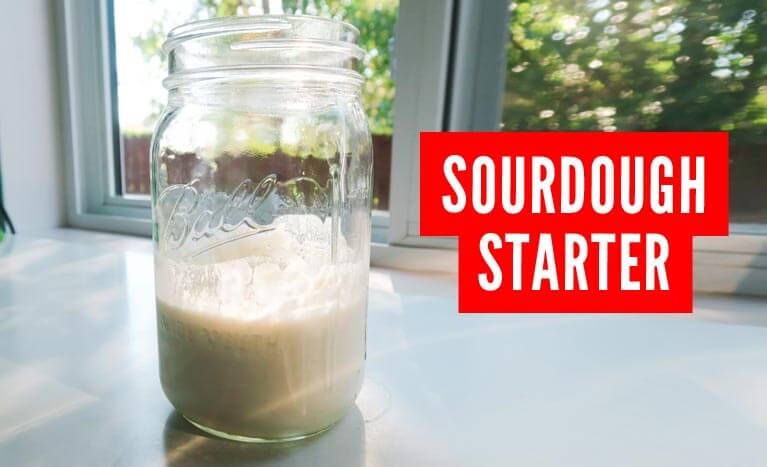If you read my blogs then you know I am passionate about being self-sufficient and learning how to provide for myself. One easy way to ensure a food supply in a SHTF scenario or the government doesn’t allow you to leave your house is by having a sourdough starter. Learn how to make a sourdough starter from scratch, now. A sourdough starter is a valuable tool and the knowledge of how to make one can help you out in unusual situations (like not being able to get yeast from the store.) It will also provide tasty treats like my sourdough English muffins, easy sourdough bread, sourdough chocolate chip cookies and tasty sourdough cinnamon rolls.
What is a sourdough starter?
In short, a sourdough starter is an active colony of wild yeast cultivated from combining flour and water and allowing it to ferment. Say goodbye to store-bought yeast, and hello to homemade yeast!
I remember venturing to the stores during the panic of 2020 and not being able to find yeast! How the heck was I going to make my homemade bread?! I began researching other routes to make bread without depending upon the store, and I stumbled upon sourdough starters. I crafted my own, made English muffins from scratch for months on end and even revived my sourdough starter after not tending to it for a month! They are incredibly hardy and easy to take care of.
How do I feed my sourdough starter?
You feed your sourdough starter with equal proportions flour and water. For this recipe to make a sourdough starter like me, add 1/2 cup water and 1/2 cup flour once a week if you are storing it in the fridge. If you actively make sourdough goods, you can leave your sourdough starter on the counter, feed it once a day, and use it to make baked goods!

This picture is immediately after I fed my starter and it began to bubble.
What flour do I use for a sourdough starter?
I would recommend starting with all-purpose flour. Most people have this flour on hand already. Get the hang of a sourdough starter down then venture into different flours that you prefer! My sourdough starter is fed with all-purpose flour still, but I plan to change it up in the future!
What do I do with my sourdough discard?
Until it is a lively and ready-to-use starter, I wouldn’t bake with the discard, so I would suggest throwing it away. Once the starter begins doubling between feedings (generally 14 days,) you can begin using the discard for brownie, muffin, and pancake recipes.
How long until my sourdough starter is ready to use?
Generally, about 14 days or 2 weeks. Mine was ready to go after 14 days, and it is still alive to tell the tale. After 2 weeks and it doubling between feedings, you can use the discard for brownies, pancakes, and muffins. To make a loaf like my sourdough bread, you will want to wait about 1 month to have a strong starter to get reliable, well-rising loafs.
Important: You must use filtered water to make a sourdough starter. Chlorine from tap water can affect the process. You can measure out the amount of water you need and leave it on the counter over night to let the chlorine evaporate. To be sure there is no chlorine, use filtered water like bottled water or invest in a Berkey water filter. I wrote a blog about why a Berkey water filter is a great investment for your health!
Let’s make an easy sourdough starter!

Sourdough Starter
Equipment
- 1 Spatula
- 1 32oz Glass Jar
Ingredients
- 1/2 cup all-purpose flour
- 1/2 cup filtered water
Instructions
- In a glass jar, mix together the flour and water until no lumps remain. Scrape down the sides and cover with plastic wrap. Mark on the glass jar where the top of the starter is, so you can visually see when it rises. Leave on the counter at room temperature for 2-3 days.
- After it has bubbled and activity is present by it rising and deflating, discard everything but 1/4 cup. Add in 1/2 cup flour and 1/4 cup water and stir until no lumps remain. Allow to sit at room temperature for 24 hours.
- Add 1/2 cup of the starter to a new jar and mix in 1/2 cup water and 1/2 cup flour. Every 24 hours, feed the starter in a ratio of 1:1:1. You will mix together 1/2 cup starter, 1/2 cup flour, and 1/2 cup water. The starter will begin to grow and increase the number of bubbles it is producing. Once the starter begins to double in 12 hours, begin feeding it once every 12 hours. Maintain this feeding schedule for 3-5 days. Store at room temperature.
- Continue to feed the starter in a 1:1:1 ratio daily. When the sourdough starter doubles 5-6 hours after feeding, you can begin using it brownie, pancakes, cake, and muffin recipes. I would wait for at least 30 days of feeding to give an attempt at bread.
- You can store the sourdough starter in the fridge and feed it once a week. Make sure to let it come to room temperature before feeding. If you bake often, you can keep it on the counter and continue to feed it daily.
